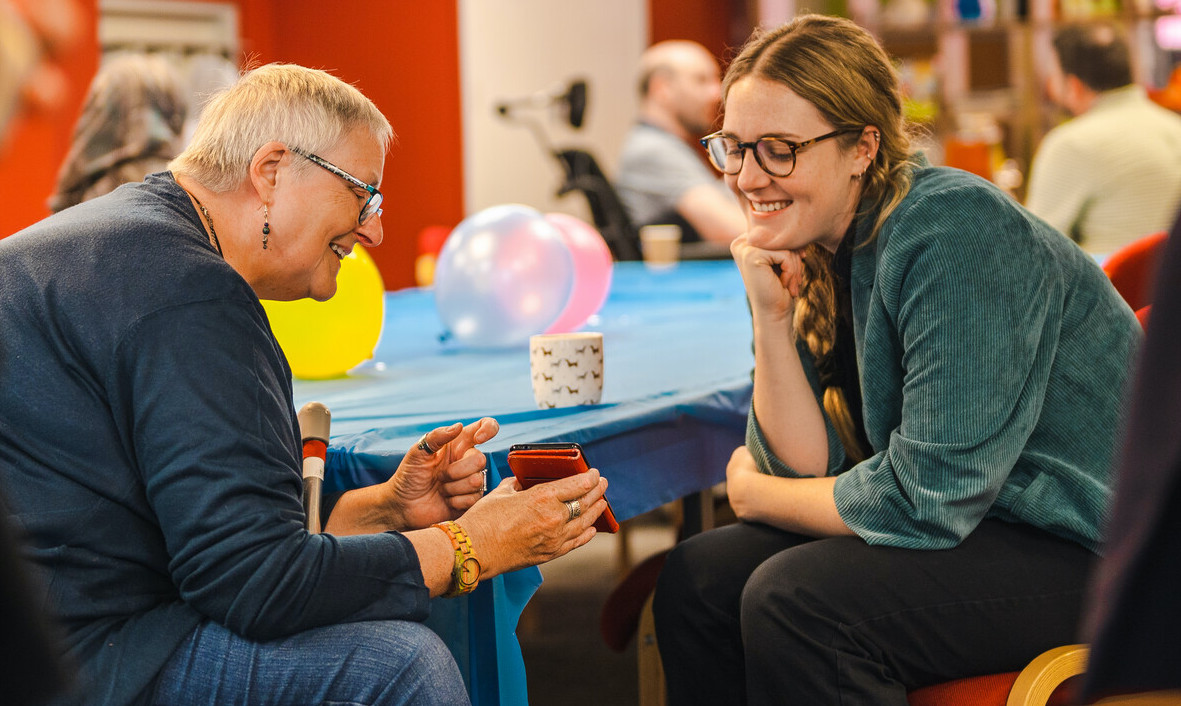When we develop severe dementia and our ability to get out in the real world is limited, pictures, writes Deborah Stone, can play a vital role in engagement. But be careful about the images you show…
For most people, sight is their most critical sense. About 50 percent of all the information comes in the form of pictures arriving into our brain through our eyes. When we develop severe dementia and our ability to get out and about in the real world is limited, pictures can play a vital role in making us feel that we are still engaging with life.
Relatives and caregivers often use photographs to help someone remember past events or people that were important to them. But be careful about the images you show: dementia sufferers find it harder to distinguish a picture from reality, which can cause distress.
Equally, some pictures can lead to disengagement and withdrawal and some to anxiety or distress. If we are to use pictures successfully with people in the later stages of dementia, we need to understand more.
Family photographs
These are commonly used when people develop dementia. Relatives and caregivers will often use them to help someone remember past events or people that were important to them. However, the problems of mid to later stages of dementia can create difficulties with the recognition and interpretation of many family photographs. Even a wedding photo can become just another irrelevant image for someone who doesn’t remember getting married.
Local landmarks
Old street scenes or photographs of local landmarks are used by many care homes. This type of picture can be very effective in creating a talking point between those with earlier stage dementia, as long as memories remain intact and as long as someone can verbalise them.
However, this type of image will be less meaningful to those in the later stages of dementia, who may find the complexity of the images too challenging, or who can no longer remember or verbalise their stories. In the later stages, people need to have a much stronger and more personal emotional connection with an image.
What other pictures have meaning?
If you spent your working life making cheese, or you had a special childhood picture book, a poster of your teenage heart-throb, or a favourite music album cover, then it’s likely that these will always be images that have very special and very personal meaning. That meaning won’t be shared by the general population but may be understood by family or friends. The difficulty lies in knowing what images might have meaning for someone and locating the right quality of image to use.
Bad news stories
News photography has made events that we have never experienced very real to us, and we have grown accustomed to seeing disasters in far distant places unfold before our eyes. War photography, the twin towers falling, a tsunami; a tiny percentage of us actually witnessed any of these terrible events, but through the visual imagery used, we all feel we have a personal connection to these events.
Bad news events have become part of our life experience in a way that they never could without photography. But when we have dementia, an inability to differentiate between a picture and reality and our inability to reappraise our own anxiety and negative emotions about the image, can lead to some seemingly innocent pictures creating distress.
A painting of children paddling can create anxiety in someone with dementia if the water looks too threatening or deep and if there is no adult around to protect them from the possibility of drowning. The emotions that the picture creates can be those that would be felt if this was a real situation unfolding before them and the person with dementia may be unable to understand that it is ‘just a painting’.
Information pictures
Images can help us make our daily life easier. A map of the underground, a computer image of what our new kitchen will look like, road maps we use to get from A to B and diagrams which help us put together flat-pack furniture. Informative images can have a deeper personal significance which may still have meaning when someone has severe dementia and we should not ignore this possibility for making connections with them.
A man who worked as a mechanic may enjoy a technical illustration of an engine, a keen hill walker may enjoy looking at ordnance survey maps and a keen amateur dressmaker may well still enjoy looking at sewing patterns.
Tips for caregivers of people with dementia
- Think about how art can engage people with and without dementia at an emotional level.
- Recognise that dementia interferes with the amazing ability of the brain to understand and interpret two-dimensional pictures.
- Find ways to communicate through visual images, which may have particular relevance.
Deborah Stone is a highly experienced consultant and marketer, who has a profound understanding of how to target the older market.
With twenty-five years consultancy experience and as the founder of the UK’s largest one- stop shop for family carers of older people, Deborah can help businesses to master the challenges they face in terms of product development, marketing and selling to this growing and complex market, as well as running effective seminars and 1-1 clinics to help staff manage their caring responsibilities. Deborah has also written the definitive guide for families caring for older people, “The Essential Family Guide to Caring for Older People” – available from Amazon and all good bookshops.
